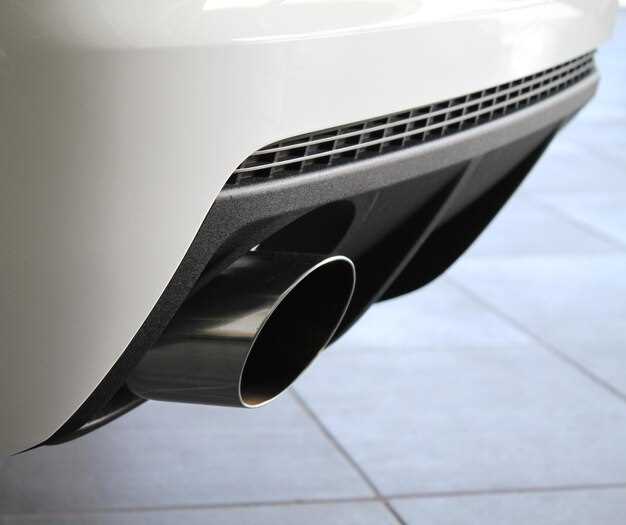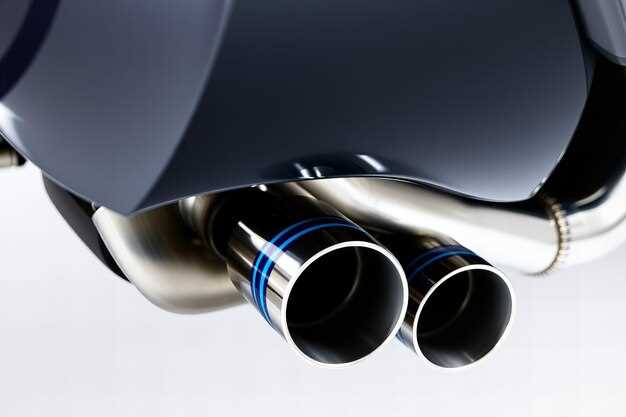Performance Exhaust Systems for Fiats

In the realm of automotive upgrades, performance exhaust systems stand out as a crucial modification for enthusiasts looking to maximize the power of their vehicles. For Fiat owners, enhancing engine performance through an upgraded exhaust system not only improves power output but also enhances overall driving experience. The journey towards unlocking your Fiat’s full potential begins with understanding how these systems function and the benefits they provide.
The primary role of an exhaust system is to channel exhaust gases away from the engine efficiently. This process is vital; as the engine produces power, it generates exhaust gases that must be expelled quickly for optimal performance. Fiat vehicles, known for their compact design and spirited engineering, can greatly benefit from a performance exhaust that minimizes back pressure and maximizes exhaust flow.
Investing in a high-quality exhaust system can result in noticeable improvements in both power and sound. A well-designed performance exhaust can amplify the distinctive character of your Fiat, transforming it into a more exhilarating machine. Beyond power gains, these systems often feature enhanced materials and construction that contribute to durability and responsiveness, making them a worthy addition for any Fiat enthusiast.
How Performance Exhaust Systems Enhance Fiat Power Output
Upgrading the exhaust system on a Fiat vehicle is one of the most effective ways to boost its performance. A performance exhaust system is designed to improve the flow of exhaust gases, allowing the engine to breathe more freely. This increased efficiency can lead to a noticeable enhancement in power output.
One of the primary benefits of a high-quality performance exhaust is its ability to reduce back pressure. Standard exhaust systems often restrict the flow of exhaust gases, resulting in a decrease in engine power. By replacing the factory system with a performance exhaust, you can minimize this back pressure, thereby optimizing the engine’s output.
Additionally, many aftermarket exhaust systems are constructed from lighter materials such as stainless steel or titanium. This weight reduction not only improves the overall handling of the vehicle but also contributes to increased acceleration. A lighter exhaust allows the engine to perform more efficiently, translating to enhanced power delivery.
Furthermore, performance exhaust systems often feature larger diameter pipes and improved muffler designs. These components work together to enhance gas flow and reduce turbulence within the system. The result is a cooler, more efficient exhaust process, which can lead to increased horsepower and torque.
In many cases, an upgraded exhaust system can also improve the acoustic profile of a Fiat. This means that while you enjoy greater power, you also gain a more aggressive and sporty sound that enhances the driving experience. The auditory feedback can make driving more engaging, complementing the improved performance.
In conclusion, investing in a performance exhaust upgrade for your Fiat is a strategic move to enhance its power output. By improving exhaust flow, reducing back pressure, and utilizing lighter materials, these systems can significantly boost engine performance, leading to a more thrilling driving experience.
Key Features to Look for in Fiat Exhaust Upgrades

When upgrading the exhaust system of your Fiat vehicle, several key features should be considered to enhance performance effectively. These features not only impact power output but also contribute to overall vehicle efficiency and sound quality.
- Material Quality: Look for exhaust systems made from high-quality materials such as stainless steel. This ensures durability, resistance to corrosion, and a longer lifespan.
- Pipe Diameter: The diameter of the exhaust pipes plays a crucial role in airflow. Larger diameter pipes can enhance exhaust flow, leading to an increase in power, particularly in turbocharged models.
- Design: Performance exhaust systems should feature mandrel-bent tubing to minimize bends, allowing for smoother airflow. This design helps to reduce back pressure, which can enhance engine performance.
- Sound Characteristics: Depending on personal preference, consider the sound level and tone of the exhaust. Some upgrades provide a deeper, more aggressive sound, while others aim for a subtle enhancement without excessive noise.
- Compatibility: Ensure that the exhaust system is specifically designed for your Fiat model. Proper fitment is essential for optimal performance and to prevent any installation issues.
- Heat Resistance: Look for systems that incorporate heat-resistant components, which help to maintain performance under high-temperature conditions. This is especially important for high-performance engines.
- Brand Reputation: Choose products from reputable brands known for quality and performance in the Fiat community. Reviews and testimonials can provide insight into the effectiveness of various options.
- Weight Reduction: Lighter materials can reduce the overall weight of the exhaust system, which helps improve power-to-weight ratio and overall handling characteristics.
- Emission Compliance: Ensure that the exhaust upgrade meets local emission regulations. Upgrades that are compliant will allow you to achieve performance improvements without legal issues.
By focusing on these features when selecting an exhaust upgrade for your Fiat, you can enhance the vehicle’s power, efficiency, and driving experience.
Installation Process and Maintenance Tips for Fiat Exhaust Systems

Upgrading your Fiat’s exhaust system can significantly enhance its power and performance. The installation process is crucial for ensuring optimal functionality. Begin by gathering the necessary tools such as wrenches, a jack, and safety stands. Before starting, it’s advisable to disconnect the battery to prevent any electrical issues. Raise the vehicle using the jack and secure it on stands for safety during the installation.
Next, remove the factory exhaust system by loosening the bolts connecting the muffler and the catalytic converter. Depending on the model, you may need to cut sections of the old exhaust if they’re welded. Carefully uninstall all components, taking note of how they are configured, as this will aid in the installation of the new performance system.
When fitting the new performance exhaust, ensure all components align correctly. Start by attaching the pipes to the catalytic converter, followed by the muffler. Use clamps to secure the connections, making sure they are tight to prevent leaks. Recheck all fittings and connections before lowering the vehicle back to the ground.
After installation, take time to inspect the exhaust system periodically. Regular maintenance is essential for performance upkeep. Check for any signs of rust, leaks, or damage to the components. It’s also important to listen for unusual noises, as these can indicate issues within the exhaust system. If any problems are detected, address them promptly to maintain your Fiat’s power and efficiency.
Additionally, regular cleaning of the exhaust tips helps maintain appearance and can prevent buildup that might affect performance. Consider using a high-temperature exhaust cleaner to ensure the surfaces remain free from grime and discoloration. Following these installation and maintenance tips will enhance your Fiat’s exhaust system performance and longevity.



